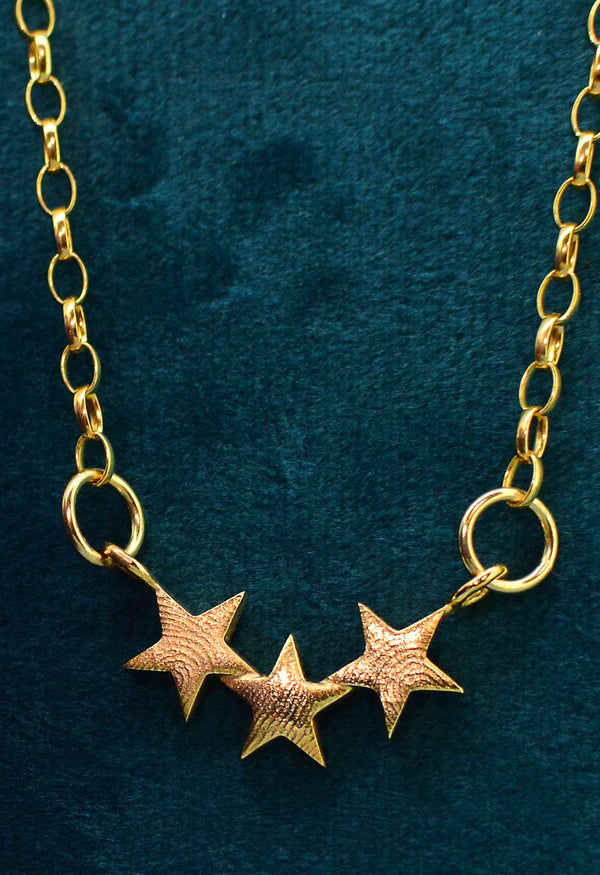Your Cart is Empty
~ Waiting List in Operation ~ Please Ask Before Ordering ~
~ Personalised jewellery to treasure forever ~
~ Waiting List in Operation ~ Please Ask Before Ordering ~
~ Personalised jewellery to treasure forever ~

Star Gazing with You – A Year of Constellations in the UK
January 07, 2019 7 min read
I grew up on the outskirts of London and I never saw the stars. Not really anyway. People in the country seem to take it for granted that you’re able to look up at the night sky, dark as pitch and see lights sparkling all around you, but that definitely isn’t the case.
In many built up parts of the UK, the curse of light pollution has now almost completely eliminated the ability to spot anything at night, apart from the moon and the odd aeroplane passing by.
I remember my brother getting a telescope one Christmas. He must have only been 8 or 9 at the time and the most interesting thing we could see (other than the moon), were the trees at the bottom of the back garden.
Interest in the night sky and what we once knew about the stars has waned in recent years because there’s really not much to see anymore.
We’re also not reliant on the stars to help us navigate, or to pinpoint the changes in the seasons for farming or growing crops.
On moving to the middle of Suffolk, I was utterly amazed at the difference. The sky at night was dark. Actually black (ish) instead of a strange shade of blurred orangey red.
And there are stars. Hundreds of them. Clear enough that you can make out patterns and the constellations.
So we came to inherit the old telescope and started to discover the stars above for ourselves.
Here are a few of the most major constellations you might spot (if you’re lucky enough), in each month of the year. These are constellations visible in the Northern Hemisphere (which includes the UK).
It might be a good idea to have a compass, as it will help you know where to look:
January
Orien has been known about since the time of the ancient Greeks,
Often referred to as The Great Hunter, it is made up of 28 individual stars that form the shape of the Hunter and his famous belt (Orien’s belt).
One of the brightest constellations in the sky, it contains two of the ten brightest known stars, Rigel (the 6th brightest) and Betelgeuse (the 8th brightest).
In front of him (to the right), you might also be able to see Taurus, the bull.
You should be able to easily spot Orien during January if you look up at the sky, to the South, just after 11pm.
February
Canis Major, otherwise known as, The Great Dog can be clearly seen in the sky from February. This is mostly because it contains Sirius, the brightest star in the sky.
Canis Major can be seen behind Orien. Thought to be one of Orien’s hunting dogs, it is easily spotted if you draw an imaginary line downwards in the sky from the back of Orien’s belt.
It is made up of 11 stars and kind of looks like a 2-legged dog if you turn your head to one side. It does have a rather unfortunate star positioned underneath its tail, looking suspiciously like it might have done its business, but you might not be able to see that.
You should be able to easily spot Canis Major during February if you look up at the sky, to the South, just after 10pm.
March
There are quite a few constellations in the night sky during March, including the zodiac constellations Cancer, Gemini and Leo, but the brightest constellation to appear by a long way, is Ursa Major, The Great Bear.
Whilst you probably won’t be able to see the entire bear shaped constellation, you should be able to clearly see The Plough, a group of especially bright and visible stars that make up the bears backside and tail.
Ursa Major is made up of 26 stars, 7 of those making up The Plough.
You should be able to spot The Plough, if you look to the North, sometime before 12pm.
April
During April, The Plough will still be clearly visible in the sky, but it will have been joined by a few other constellations that you should be able to spot if you look carefully, including Leo The Great Lion and Hydra, The Sea Serpent.
Leo, which actually does (for once) look kind of like a Lion is made up of 22 stars and can be seen underneath The Plough if you look to the South.
Hydra, the largest known constellation in the sky, is made up of 19 stars and can be found, slightly underneath and to the left of Leo.
You should be able to see both constellations by around 11pm. Remember, the clocks have now sprung forward and it will be darker a lot later.
May
There’s not much change in the sky during May, not that you’ll be able to spot without a telescope anyway, but if you look carefully, you might be able to spot the 20 stars that make up constellation known as The Maiden, or Virgo.
It is the second largest constellation in the sky and historically, it’s appearance marks the start of the Harvest season. It contains only one particularly bright star called Spica which forms the maidens right hand.
Virgo can be seen if you look up into the sky, to the South after 11pm. It is found almost directly underneath Ursa Major and below Leo, to the left.
June
Although you might just about be able to see Scorpio starting to emerge in the sky, June sees the appearance of a few smaller, but more obvious constellations.
The brightest one of these is probably Cassiopeia, or The Seated Queen, made up of only 5 main stars.
It looks a little like a lop-sided W, where the left half is noticeably smaller than the right and was named by the ancient Greeks after a particularly vain mythological Queen who was married to King Cephus (He has his own constellation if you feel like looking it up).
Cassiopeia can be seen if you look up in the sky to the North between 11pm – 12pm.
It is located below The Plough, to the right.
July
During July, if you go out star gazing sometime after 10pm, you will be able to see The Milky Way with its many stars stretching out before you.
You might also be able to Hercules, The Strong Man and Serpens, The Serpent if you look South, although neither are wonderfully clear.
However, July is perhaps best known for the appearance of a set of 3 exceptionally bright stars that make a clear triangle in the night sky, known as The Summer Triangle.
The three stars are called Deneb (at the top of the triangle , Vega (middle) of the triangle) and Altair (bottom of the triangle) and they should be seen clearly if you look to the South. Interestingly, the Summer Triangle is not actually a constellation. Instead, we refer to it as a Asterism.
August
August sees the arrival of another particularly large constellation, Pegasus, The Winged Horse, which doesn’t even remotely resemble its namesake, mostly because the constellation is not supposed to include the whole horse?!?
Made up of 14 stars, it instead looks rather like a large square, made up of 4 bright stars, with 3 long legs. If you look closely, you might be able to see what looks like an ear perched on top of the square, but I personally still think it looks a lot more like a wayward kite than a horse.
To see Pegasus, look to the North between 11 – 12 pm.
The Milky Way will also be much clearer in the sky this month and the Summer Triangle will still be easy to see around 11-12pm.
September
Despite the fact the Autumn is now fast approaching, the night sky is still rather summery to look at and August doesn’t really see many changes from July.
The Summer Triangle and The Milky Way are still easy to spot on a dark night if you stay up late enough.
If you look to the South after 11pm, you should now be able to see the large constellation Cygnus, The Swan and the stars that make up The Northern Cross.
The Northern Cross is not actually a constellation itself. It’s part of The Swan.
To complicate matters even further, Cygnus is also part of The Summer Triangle (confused yet?)
Right. At the top of The Summer Triangle asterism is a bright star named Deneb.
Cygnus itself is made up of 20 stars, with Deneb more or less, in the middle.
The Northern cross is made up of 5 bright stars that make up the centre of Cygnus, with Deneb at the very top.
October
Autumn is now upon us and October sees Pegasus, The Winged Horse becoming easier to spot on a dark night.
If you look to the South, you should also be able to still see Cygnus and The Northern Cross.
The sky seems to become a lot busier at this time of year with Taurus, The Bull and the Andromeda constellation appearing right on top of Pegasus.
Taurus is easier to see and a little more interesting. Made up of 16 stars, the constellation also contains a large cluster of stars called Pleiades.
Pleiades is a cluster made up of around 500 stars with 7 extremely bright stars in the centre, which are known as The Seven Sisters, named after the 7 daughters of Atlas in Greek Mythology.
November
The nights are now getting colder, but if you’re brave enough to venture out and look up, you will still just about see Pegasus, The Winged Horse.
There’s not much change at all in November, but Taurus and the Seven Sisters will still be very clear.
You should also be able to see Perseus, The Hero, to the North, which is made up of 21 stars and looks almost like a funny little triangular man on his side.
December
The busiest time of the year for a lot of us, the December sky becomes a busy place too, as it sees the appearance of yet another zodiac constellation.
In addition to Perseus, Pegasus, Taurus and The Seven sisters, they are now joined in the sky by both Orion and the Gemini twins.
Orion, The Great Hunter, returns to the sky, with its 28 stars and 3 very bright stars in the centre, forming his belt.
Orion is one of the most recognisable and easy to see constellations, as it is not only very bright, but it also (for once), does look rather like a hunter (as it’s supposed to).
Geminiagain, really does resemble twins holding hands.
The twins of Gemini are each known as Castor and Pullox, who were two mythological Greek heroes (and never really twins).
Together, they are made up of 18 stars with the 2 very bright stars called Castor and Pullox forming the twin’s heads.
Both Orion and Gemini will remain in the sky until the beginning of the spring.
Leave a comment
Comments will be approved before showing up.
Subscribe
Sign up to get the latest on sales, new releases and more …

Join the Club
WE'RE SO PLEASED TO SEE YOU!
Stay a while and look around.
While you're here, why not subscribe to our newsletter?We'll give you £20 off your first order, VIP access to new products, and access to our very special sample sales.We promise not to annoy you (honest).
